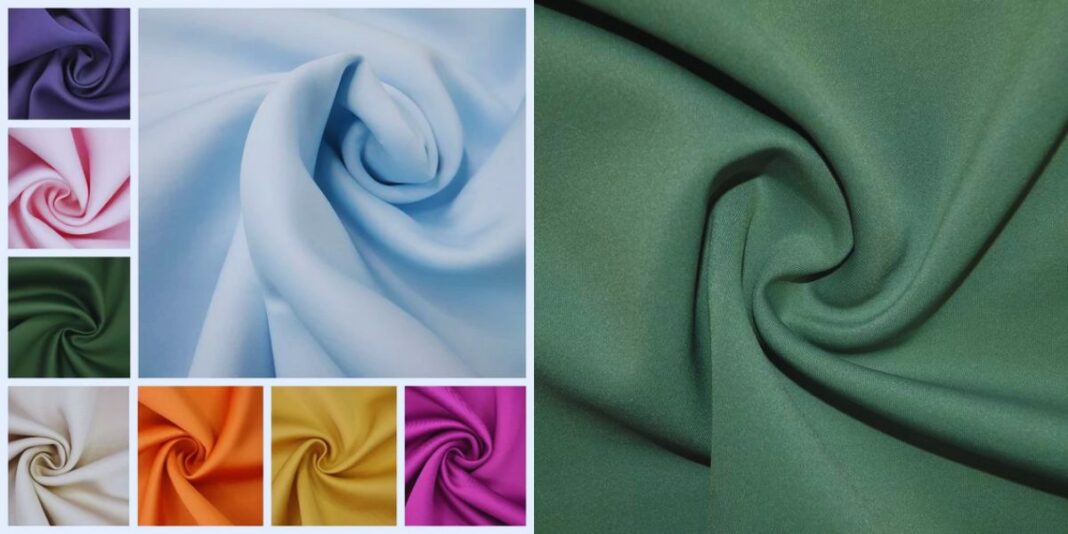An Overview of Neoprene Fabric
Neoprene fabric: what is it? This synthetic rubber material is incredibly strong, flexible, and fashionable. Because of its flexibility and durability, this adaptable fabric is widely employed in many different sectors. Neoprene fabric has gained popularity in sports, fashion, and industrial settings because to its special qualities. Everything you need to know about neoprene fabric and why it is the best combination of strength, stretch, and style will be covered in this article.
Table of contents
- An Overview of Neoprene Fabric
- The Neoprene Fabric’s History
- Neoprene Fabric’s composition and manufacturing
- Special Features of Neoprene Fabric
- The Fashion Industry’s Preference for Neoprene Fabric
- Sportswear & Activewear Made of Neoprene Fabrics
- Applications of Neoprene Fabrics in Industry
- How Neoprene Fabrics Should Be Maintained
- Sustainability of Fabrics Made of Neoprene
- How to Pick the Proper Neoprene Material
- Neoprene Fabric’s Future
- Conclusion: The Unique Features of Neoprene Fabrics
- FAQs
The Neoprene Fabric’s History
Neoprene fabric: what is it? This substance first appeared in the early 1930s. Neoprene was created by DuPont scientists as a substitute for natural rubber. Since then, this fabric has changed and become more well-known due to its ability to withstand water, heat, and chemicals. Neoprene fabric has been a mainstay in many industries as a result of designers and manufacturers embracing it over time for its adaptability.
The first uses of neoprene fabric were in industry. Its versatility, however, allowed it to enter the sports and fashion sectors. These days, this fabric may be found in anything from luxury clothing to medical braces. Neoprene fabric has remained popular and in great demand due to ongoing innovation in its production.
Neoprene Fabric’s composition and manufacturing
What is used to make neoprene fabrics? Polychloroprene, a synthetic rubber, makes up this fabric. Neoprene fabric is produced by manufacturers using a polymerization technique, which results in a material that is strong and flexible. To improve its performance, the cloth frequently incorporates other materials like polyester or nylon. Neoprene fabric is now much more effective thanks to new technology, offering the highest strength and elasticity possible.
There are multiple steps involved in creating neoprene fabric. Polychloroprene chips are first made by producers, melted, and mixed with other ingredients. The fabric’s flexibility, resilience to weather, and durability are all enhanced by these additions. After the mixture is ready, it is rolled into sheets, which can then be further reinforced by laminating them with textiles.
The end product is a material that is comfortable and flexible even in the face of harsh conditions. Customers can better appreciate neoprene fabric’s superior performance over other synthetic fabrics by knowing how it is created.
Special Features of Neoprene Fabric
What is the reputation of neoprene fabrics? It is notable for its resilience to weather, suppleness, and durability. Neoprene fabric, in contrast to conventional fabrics, keeps its structure even in the most adverse circumstances. It is perfect for outdoor and industrial applications because it is resistant to chemicals, water, and UV radiation. Neoprene fabric also provides insulation, which aids in retaining body heat in cold climates.
The ability of neoprene fabrics to withstand environmental stresses is one of its most amazing qualities. Extreme temperatures, oils, and solvents do not readily break it down. Because of this, it is a dependable option for applications that call for durable materials. Neoprene fabric also absorbs shocks quite well, which makes it perfect for knee pads, protective gear, and even laptop sleeves.
The Fashion Industry’s Preference for Neoprene Fabric
What is the function of neoprene fabric in fashion? This material’s versatility and sleek appearance make it a favorite among designers. Neoprene fabric offers a comfortable fit and permits structured patterns. This fabric is used by several luxury companies for jackets, skirts, and dresses. Neoprene fabrics produces chic, contemporary designs that are striking on the runway because it maintains its shape well.
Fashion designers value the depth and texture that neoprene fabric gives garments. Neoprene fabrics stays smooth and polished, in contrast to conventional materials that wrinkle easily. For minimalist, futuristic, and avant-garde fashion styles, this makes it perfect. Furthermore, creative designs that are both useful and beautiful are made possible by neoprene fabric’s capacity to stretch while maintaining its structure.
Sportswear & Activewear Made of Neoprene Fabrics
What role does neoprene fabrics play in sportswear? Its elasticity and compression qualities make it an essential component of sports equipment. Neoprene fabrics increases blood circulation, supports muscles, and boosts performance. Neoprene fabric is preferred by athletes for protective gear, gym attire, and wetsuits. Sports pros favor it because of its resilience to harsh environments.
Because it is water-resistant, neoprene fabric is essential for aquatic activities. Neoprene-based wetsuits keep swimmers, divers, and surfers warm in chilly seas. Insulation is provided by the fabric’s ability to retain a tiny layer of water against the skin, which warms up. Additionally, swimmers can float more easily thanks to its buoyant qualities, which improves their swimming experience overall.
Applications of Neoprene Fabrics in Industry
What role does neoprene fabrics play in various industries? Neoprene fabric is used in many sectors for its durability and safety. This material is used by manufacturers to make automobile parts, insulation sheets, and protective gloves. Heavy-duty applications require neoprene fabric because of its resilience to heat, chemicals, and oils. Neoprene fabrics increases efficiency and lowers maintenance costs due to its long lifespan.
This fabric is widely used in the automotive industry for car components. Because of its resilience against deterioration, it is frequently found in belts, gaskets, and vehicle seat coverings. This fabric is also perfect for industrial padding because of its cushioning qualities, which guard against harm to machinery and equipment.
How Neoprene Fabrics Should Be Maintained
What is the best way to care for neoprene fabrics? Its longevity and aesthetic appeal are increased with proper care. This fabrics can be cleaned with cold water and mild soap. Steer clear of strong detergents that could weaken the fabric’s flexibility. Neoprene fabrics should always air dry to avoid shrinking or losing its shape. This fabric’s quality is also preserved over time with careful storage.
Neoprene fabrics will last for many years if it receives regular care. Avoid letting it sit in the sun for extended periods of time since UV radiation can degrade or fade the material. When this fabric is stored properly in a cool, dry location, mold and mildew cannot grow, keeping the fabrics useful and fresh.
Sustainability of Fabrics Made of Neoprene
What environmental effects does this fabric have? Although it’s a synthetic material, environmentally friendly substitutes are starting to appear. Some producers use limestone or plant-based resources to create sustainable neoprene fabric. Environmental responsibility is encouraged and carbon footprints are decreased by these innovations. Additionally, lifespan is ensured by selecting premium neoprene fabrics, which reduces landfill waste.
How to Pick the Proper Neoprene Material
What is the best way to choose neoprene fabrics? Think about thickness, stretchability, and purpose while purchasing neoprene fabrics. While thinner neoprene fabrics give greater flexibility, thicker ones offer superior insulation. Always verify durability and quality, particularly for industrial or sporting applications. Choosing the ideal neoprene fabrics for any project is made easier by being aware of the particular requirements.
Neoprene Fabric’s Future
What are the prospects for neoprene fabrics in the future? Neoprene fabric is becoming more and more in demand across a range of sectors. Manufacturers are creating stronger, lighter, and more environmentally friendly models as a result of technological improvements. This fabric is expected to become increasingly more eco-friendly, fashionable, and useful with future advancements.
Conclusion: The Unique Features of Neoprene Fabrics
What is the main benefit of neoprene fabrics? Few materials can equal its ability to blend strength, stretch, and style. With exceptional durability and adaptability, neoprene fabric demonstrates its value in a variety of applications, including fashion, sports, and industries. Neoprene fabrics will continue to be a popular choice for manufacturers, athletes, and designers as technology advances. Neoprene fabric is a great option for a variety of applications since it guarantees long-lasting quality.
FAQs
Neoprene fabric is used in fashion, sportswear, industrial applications, and protective gear.
Some eco-friendly neoprene fabrics options exist, but traditional neoprene is not widely recyclable.
Neoprene fabric is generally safe, but some individuals may have allergies to synthetic rubber.


